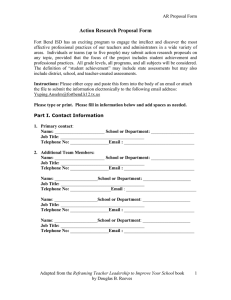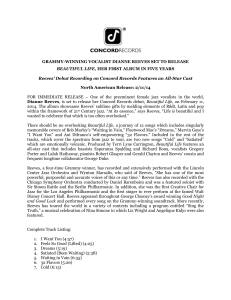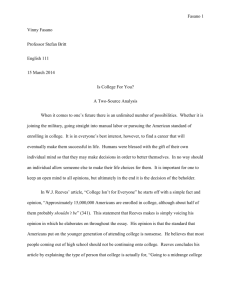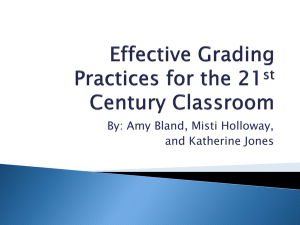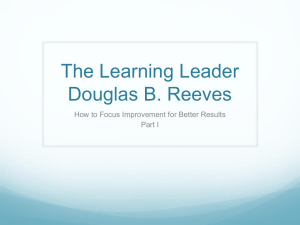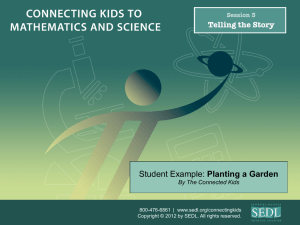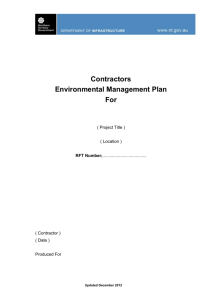Finding your leadership focus: What matters most for student results
advertisement
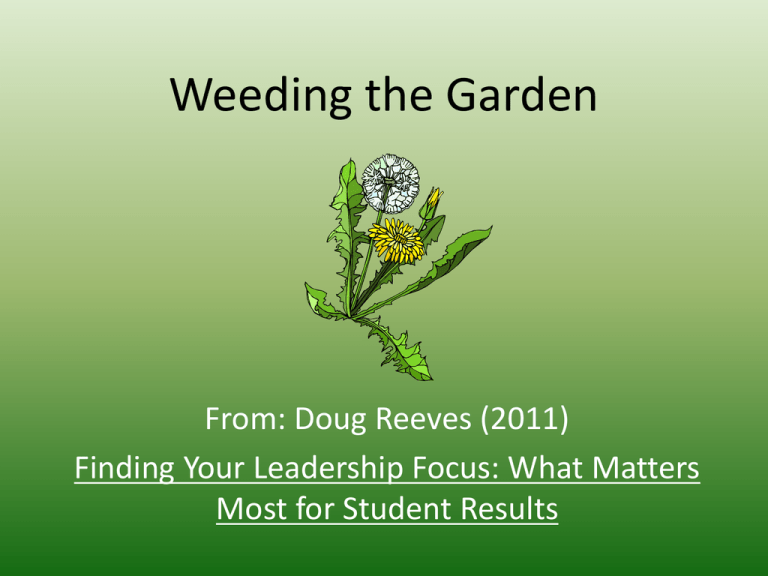
Weeding the Garden From: Doug Reeves (2011) Finding Your Leadership Focus: What Matters Most for Student Results How Do We Create a Plan That Focuses on a Few Strategies AND How Will We Implement with High Fidelity (By at Least 90% of Our Staff?) Reeves, Douglas B (2011). Finding your leadership focus: What matters most for student results. 3 Keys to Successful Implementation Focus Efficacy Monitoring Reeves, Douglas B (2011). Finding your leadership focus: What matters most for student results. Laser-Like Focus: Why Weed the Garden? • Of 21 variables studied, the combination of FOCUS, MONITORING, and EFFICACY were most powerfully related to student results • Schools with effective monitoring and focus had TWICE THE GAINS in reading over three years compared to low focus schools • Schools that most needed focus were least likely to have it. Webinar Title: 02/07/2011 Change Leadership in Action www.leadandlearn.com/multimedia-resource-center/webinars The Focus (Stage 2: Plan) Goals, Strategies & Actions Steps • Efficacy – When staff believe that what they do in the classroom DOES predict the outcome of student achievement, their levels of stress, anxiety, and burnout are lower. • Monitoring (Stage 3: Implementation) – Frequent: at least every 1 -2 weeks – Adult Actions must be addressed – Constructive Reeves, Douglas B (2011). Finding your leadership focus: What matters most for student results. What is Your Load Limit? One Person’s Is Another Person’s… What Happens When We Don’t Weed our Garden? 1.Toxic Weed Thistle: Deep roots, use caution when touching Toxic Weeds – Demand a response – We are reluctant to challenge and remove them – May look good, sound good, make people feel good in the short term – Once introduced into the environment, they strangle the life out of the other plants that we had hoped to cultivate Reeves, Douglas B (2011). Finding your leadership focus: What matters most for student results. 2. Unsustainable Weed Bamboo can grow quickly and become a weed when not carefully planning for it’s growth/use. Unsustainable or Programmatic Weeds – Can be a meritorious idea – Becomes a weed when it is unsustainable! – Can quickly move from good intentioned to chaos Reeves, Douglas B (2011). Finding your leadership focus: What matters most for student results. 3. Diversionary Weed Melaleuca Tree/Brush: Takes over in Florida. Not native to USA Diversionary Weeds – Earnest intent and good appearance – Becomes a weed when it takes time and focus away from priority – What we do with our time has to have an outcome related directly back to student achievement Reeves, Douglas B (2011). Finding your leadership focus: What matters most for student results. Implementation Audit Protocol 1. Initiative Inventory: a.) Look at each initiative listed. Start with items in the “Current” column. Repeat Steps 2-4 with “Possible/New” column. 2. Determine Impact on Student Achievement a.) Review actual student achievement and researched achievement claims. Define from Low to High. 3. Range of Implementation: a.) Define/quantify the levels of implementation i. How much time, energy and fiscal/human resources will be needed to continue to implement at a level of at least 90%? HIGH Implementation is 90% of staff implementing with fidelity. 4. Plot results on the chart Reeves, Douglas B (2011). Finding your leadership focus: What matters most for student results. Current Initiatives 2 minutes: Each person (without discussion) list the CURRENT initiatives in their district/building that are being undertaken. THEN, combine the individual lists into one group list. Definition of Initiative: Anything being undertaken that must maintain a focus, needs human and/or fiscal resources and should be monitored for implementation. Step 2: Determine Impact on Student Achievement Current Initiatives List Definition of Initiative: Anything being undertaken that must maintain a focus, needs human and/or fiscal resources and should be monitored for implementation. Achievement Low to High Actual Student Results Researched Claims Level of Implementation Actual Level of Implementation Low to High (High = 90%) Can we continue to provide the time, energy, resources (human & fiscal) to ensure 90% level of implementation? Hattie, J. (2008). Visible Learning: A Synthesis of Over 800 MetaAnalyses Relating to Achievement. New York, NY: Routledge. Step 3: Determine Level of Implementation Current Initiatives List Definition of Initiative: Anything being undertaken that must maintain a focus, needs human and/or fiscal resources and should be monitored for implementation. Achievement Low to High Actual Student Results Researched Claims Level of Implementation Actual Level of Implementation Low to High (High = 90%) Can we continue to provide the time, energy, resources (human & fiscal) to ensure 90% level of implementation? i.e. District mandates a specific assessment be used for short cycle assessments to use in TBTs. Negotiate that you’ll do SCA but can a variety be used instead. Boundaries vs. Micromanagement Avoid It Low impact on learning AND Low action on part of implementers • We keep doing it because we always have LOW Impact of Decision on Learning HIGH Negotiate It LOW Do It! High learning High action able to be taken Drop It You have control but there is low impact on learning. •i.e. using a textbook from front to back even if standards aren’t addressed vs. only using the chapters that focus on the standards Level of Implementation HIGH Research findings from Implementation Audits 1) Non-linear relationships 2) Drowning in initiatives 3) Most initiatives not monitored 4) Many initiatives are not linked to student achievement Threats to Sustainability 1.) “Program Orientation” – tradition of cycles of initiatives, boredom, death, and then comes another new initiative 2.) Vocal Opposition of a few wears the leadership down 3.) Political Opposition – i.e. Honors classes increased in size due to improved core instruction which created large class sizes in honors which were traditionally small Deliberate Practice • It takes 24 (Reeves) to 40 hrs (Darling-Hammond) of practice to apply new professional practices. Reeves, Douglas B (2011). Finding your leadership focus: What matters most for student results.
